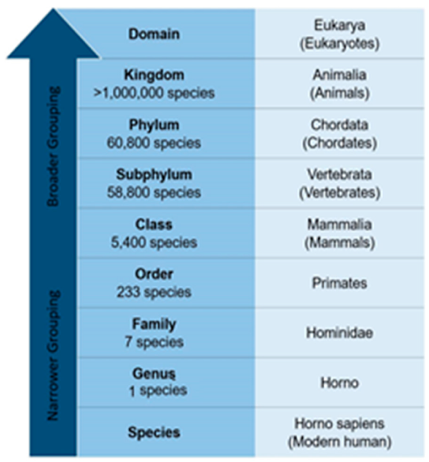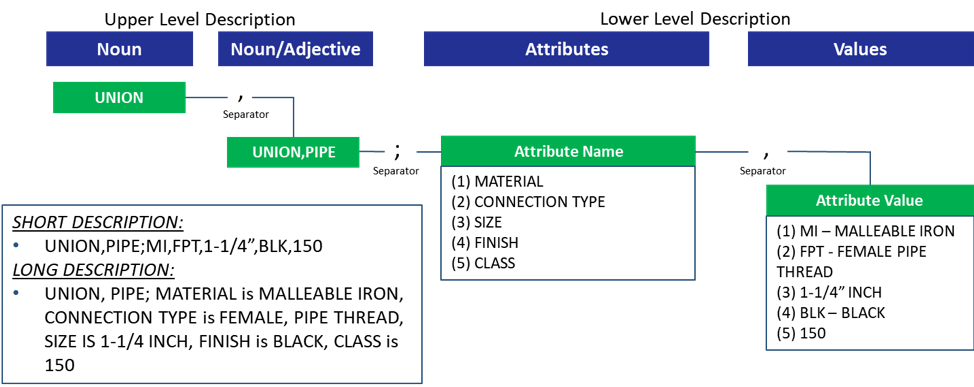Carl Linnaeus, a Swedish botanist, first published his book Systema Naturae in 1735 in which he described his classification of the biological kingdom. For his renowned efforts, Linnaeus became known as the father of modern taxonomy, classifying living things into smaller and smaller sub-categories to give organisms a specific name as well as a group in which to belong.
 Methods employed by Biology students to remember the exact order in which this would occur, (Domain, Kingdom, Phylum/Sub-Phylum, Class, Order, Family, Genus, Species) were mnemonic devices—purely nonsense sentences that kept the precise order of the naming system memorable. The online dictionary Wikipedia lists several such contrivances, including the students’ device of choice: Dumb Kids Prefer Cheese Over Fried Green Spinach.
Methods employed by Biology students to remember the exact order in which this would occur, (Domain, Kingdom, Phylum/Sub-Phylum, Class, Order, Family, Genus, Species) were mnemonic devices—purely nonsense sentences that kept the precise order of the naming system memorable. The online dictionary Wikipedia lists several such contrivances, including the students’ device of choice: Dumb Kids Prefer Cheese Over Fried Green Spinach.
Unfortunately, such a memorable naming system is not possible for those breaking down the “pieces parts” of Material Master data into a naming taxonomy. Nevertheless, by putting materials into ever-smaller categories, it becomes easier for company stakeholders to search for specific materials and to master new materials that are similar to existing materials. A well-defined taxonomy helps to organize content into hierarchical relationships.
Best Practices for Naming Taxonomy
• Should have a specific use
• Should have a logical hierarchy
• Should be easy to understand by users in different divisions or departments
• Should conform to other published taxonomy standards when possible
• Should not be redundant to other defined metadata
• Acronyms or abbreviations avoided where possible
• Should not nest further than 5 levels if possible
• Taxonomy should be media independent
(*Database Publishing Consultants, Inc.)
Because the Material Master Record contains all the information about the materials a company procures, manufactures, stores and ships, the goal of material taxonomy is to give every material a unique description based on its characteristics. These categories allow reports to be run on anything as general or specific as needed.
According to Earley Information Science, (July 2011) Taxonomy is about “semantic architecture.” In other words, the practice is about making decisions regarding how to map unlike concepts and terms into a consistently reliable structure. Data uncertainty has no place in a Material Master’s taxonomy because to be usable, such unstructured information must be consistent and searchable. Without proper naming procedures in place, any data is suspect—likely unreliable and with limited value.
A material will have a short description and a long description. The short description will often use abbreviations of longer words, for instance, GAL instead of gallon. Some Enterprise Resource Planning (ERP) systems impose a character limit on short descriptions so the goal of a good short description is to identify a material with the fewest characters possible that still makes sense. Conversely, a long description should be as detailed as possible with words being spelled out and ancillary details included when possible.
5 Key Parts for Easy Search and Quick Reference
Noun
Adjective
Attributes
Values
Punctuation
A noun should describe what a material is, an adjective should say what kind of material it is, an attribute is a characteristic of the material that you want to record, and the value is the specific characteristic of the attribute.
Punctuation is used to separate the different pieces of the description for easier readability and text parsing. Punctuation must be consistent throughout material master descriptions. Often different characters will separate the noun and the adjective, the noun-adjective pair from the attributes, the attributes from their values and the attribute and value pair from the next attribute and value.
Short and Long Descriptions Properly Organized

Abbreviations
We’ve stated that abbreviations are to be avoided if possible. However, that goal is not always achievable, particular when it comes to the limitations of the number of characters of text that can be entered into a particular line field in many ERP systems. Because of that, a standardized and agreed-upon system of abbreviation use is necessary for a company to effectively organize their datasets.
Standardized Abbreviations:
It’s not uncommon for purchasers and warehouse personnel to use their best judgment when it comes to abbreviating a material. The problem is that when Joe from Purchasing is looking at the inventory, he may not use the same abbreviation that Tyler from Receiving used. These free text fields can wreak havoc on inventory levels and cause a cascading chain of errors that will have far-reaching implications throughout the company.
Items with Same Abbreviations:
Materials that use the same or very similar abbreviations often clog up Material Masters and can result in unnecessary purchasing spend. If a company sells nearly identical products, a standardized system of abbreviations is particularly critical. For example, if a company wants to add a “GAL” abbreviation for a gallon of lubricant, then they should keep in mind that similar products should have different abbreviations. Otherwise, the “GAL” could signify lubricant oils or any petroleum-based lubricant product. Once the designation “GAL” has been decided upon, then any other abbreviation for gallon would be unacceptable, i.e. GL, GLL or any other designation. Note: if the use of GAL is wanted to represent something else such as GALVANIZED, the company needs to remember how GAL is currently being used and make a careful decision to allow it to represent a different attribute value.
Decisions about how data will be abbreviated can streamline a company’s master taxonomy, failure to do so is courting disaster.
Conclusion: Using abbreviations on Material Masters is acceptable, provided that it follows a particular taxonomy or naming order.
The United Nations Standard Products and Services Code—UNSPSC, is another system of classifications that companies may also adopt, containing four levels of code arranged into a hierarchal system:
Segment—The logical aggregation of families for analytical purposes
Family—A commonly recognized group of interrelated commodity categories
Class—A group of commodities sharing a common use or function
Commodity—A group of substitutable products or services
This system allows people looking for a product or service to use the Segment code to narrow their search to the relevant domain in which they will find their desired product or service, facilitating commerce between buyers and sellers.

Given the necessity of effectively managing master data and the seemingly endless opportunity to get it wrong, what can be done? Enter the QuadraDot solution. Our Granite Material Masters™ scalable software has been designed to simplify and restructure company data. Standard definitions, templates and abbreviations can all be created for noun-adjective combinations. Our cloud-based software will enforce proper taxonomy and quickly identify duplicate records.
Along with the company’s in-house team, we’ll assess the current state of the Material Masters, unearthing poor quality data, duplicate data, and data that has become obsolete. Then we’ll work together to define where the company wants to be in the future.
QuadraDot doesn’t have a catchy mnemonic device for classifying Material Master data. But what we do have is the ability to work with company stakeholders to create a taxonomy that will standardize their Material Master data comprehensively today, tomorrow and in the future—all undoubtedly approved by Carl Linnaeus, the father of modern taxonomy.






